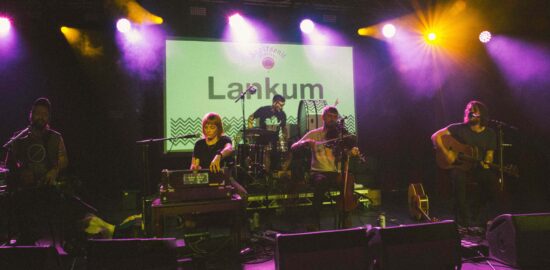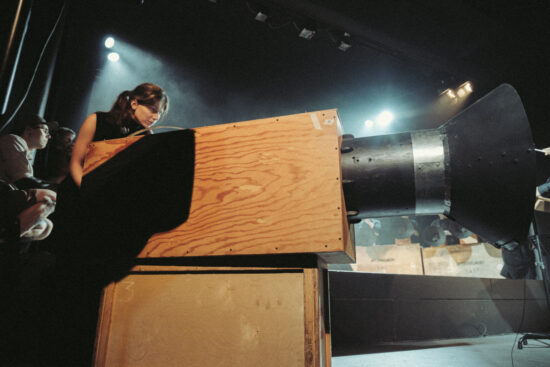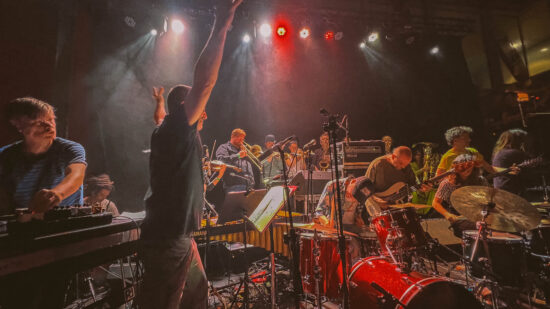Happening in the middle of the Atlantic, Tremor is a place of searching for identity: of the musicians who play there, local cultures and what a festival can be in a globalised world.
Text & photos: Jakub Knera
Translation: Aleksandra Szkudłapska
Full festival gallery on FLICKR
The Azores are not Madeira – this disclaimer is for the sake of readers who might want to succumb to stereotypes and imagine an archipelago of sandy beaches packed with deckchairs and tourists. I heard this warning (or rather encouragement) from Red Trio’s Gabriel Ferrandini, who also told me about Tremor – this year saw the sixth edition of the festival, the second one I went to. The Azores are more familiar, natural, not as touristy and not yet spoiled by commercialization. – They are more Portuguese, Ferrandiniconcludes. – The nature is not as devastated as on Madeira, adds Duarte Ferreira, co-author of the Sístole exhibition taking place at Ponta Delgada’s one-year-old Galeria Brui. The sound expert lives on Madeira and in a year’s time, apart from São Miguel, where the festival takes place, wants to visit subsequent islands of the archipelago. Earlier on, inspired by his stay on the island, together with the photographer Renato Cruz Santos he created a fairy-tale sonic and photographic journey into the Azores, where the colours of nature surprise you at every corner and pulsating nature tempts you with its mystery. An apt introduction to the festival.
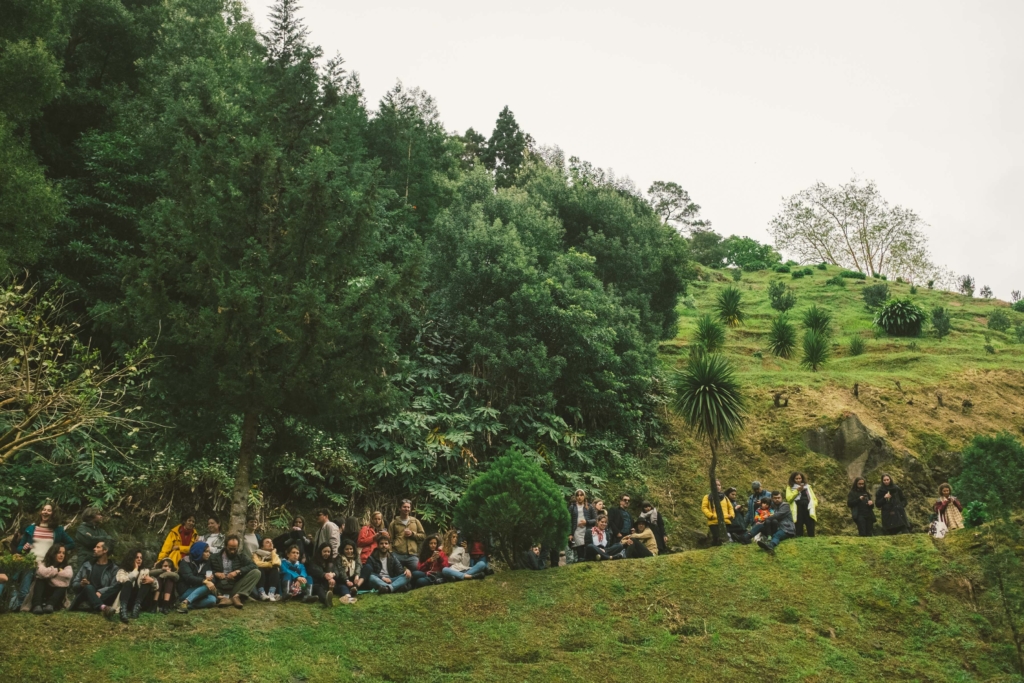
Tremor na Estufa / fot. Jakub Knera
Tremor’s organizers and curators have a broad-looking approach to their line-up, which spans electronica, free music, tribal sounds, guitar traditions, folk and ethnic music. Like a micro-scale Primavera Sound, long before it turned into a mass commercial event. Instead of alternative stars, it offers interesting names and a strong representation of the Portuguese scene.
This year, however, the main headliner was mist. The island was literally drowning in it, which caused changes in the programme and in the experience of the place (organizers, through various maps and promotions, encourage visitors to take trips and visit various local establishments independently). In Furnas, where the first concert was to take place in the legendary thermal springs of Terra Nostra park (that’s what it looked like last year), the weather conditions proved too difficult to make that happen. Both gigs were moved to a casino with a slightly socialist realist feel – a shame, because the post-punk YinYin would work amazingly in the hot pool. The evening trip formed part of the so-called Tremor na Estufa series of secret gigs. No-one knows who is going to play or where – the information is published at a set hour and then everyone travels to the location, which changes from day to day.
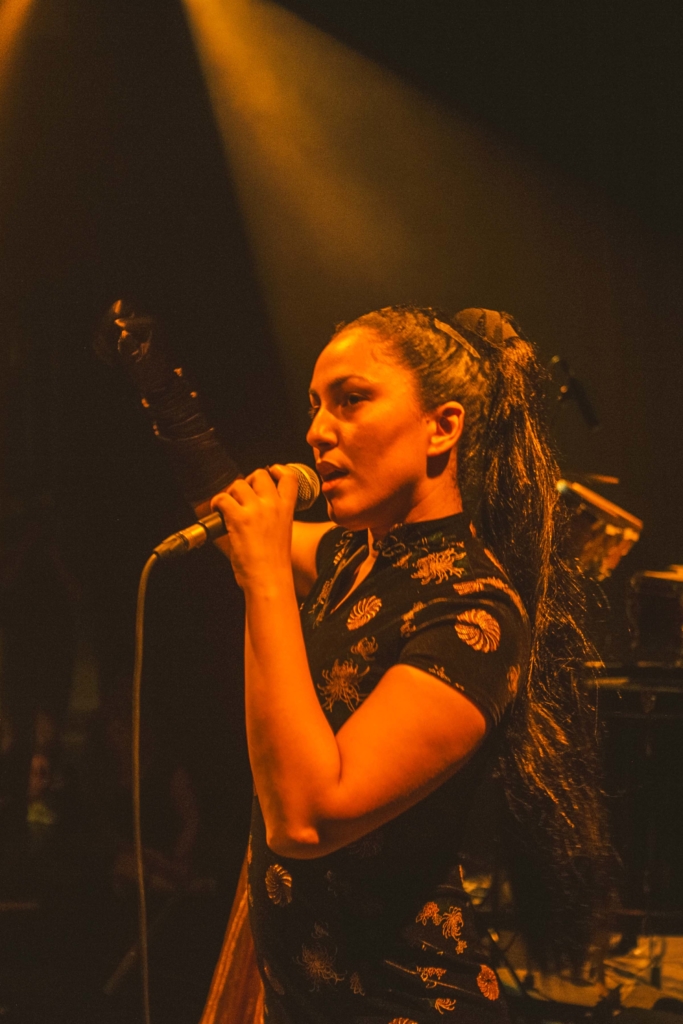
Lafawndah 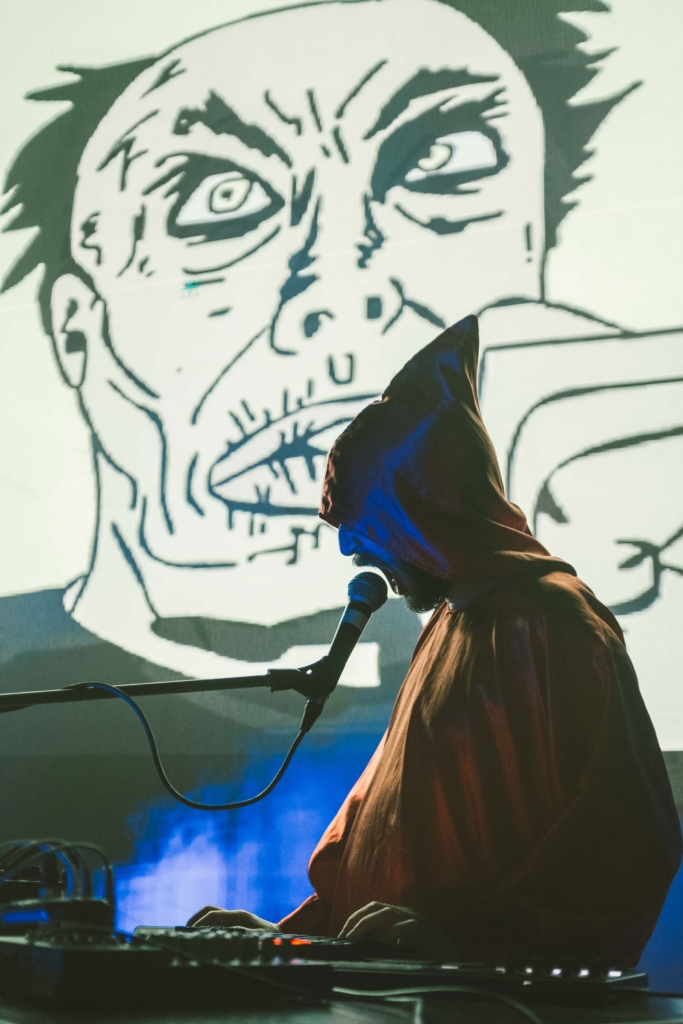
Chupame El Dedo
Looking for Identity
Tremor is a good opportunity to do some identity searching. Mostly for the musicians who play there. – The future has no gender, said Odete, who this year released her amazing Matrafona, at a debate taking place on 10 April at noon at the Neat Avenida hotel. She also explained what the title of her record stands for: a man who dresses like a woman (in the south of the country) or a woman who hides her face to obscure her sex from others (in the north). – And what is it like on the islands? – asked someone from the audience, meaning it as a joke, but actually providing an apt punchline to the conversation. The Azores, isolated geographically and for a long time also in terms of transport, are completely different than continental Portugal.
This search for identity, trying to find oneself in the multitude of cultures and globalised pop culture, was seen – and, most of all, heard – at subsequent festival concerts. In Arco 8, psychedelic trio Fumaça Preta presented a mix of funk, tropicalia, rock, Brazilian and Latin American music. Approaching it with their trademark gusto, they were humorous and ironic, often taking the mick out of various rock and hard rock clichés. To me, though, the whole show was a little too long and intense, and I’ve had slightly enough of it towards the more vapid ending. The evening finished with Odette who offered her take at a pop cultural mix in a very refreshing electronic dance formula, oozing ease and energy.
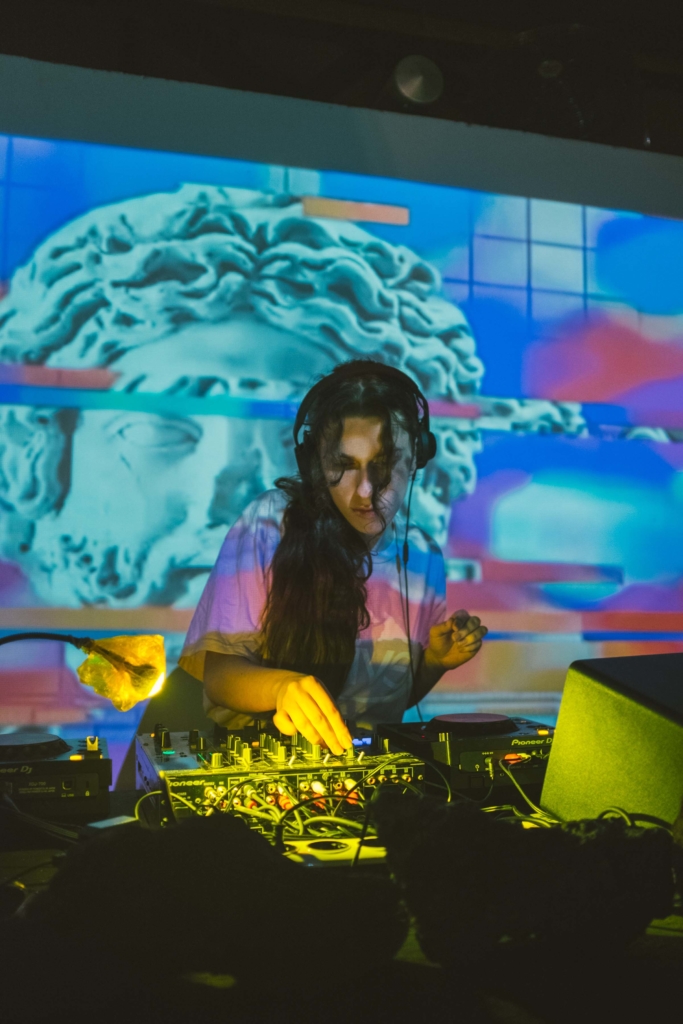
Odete 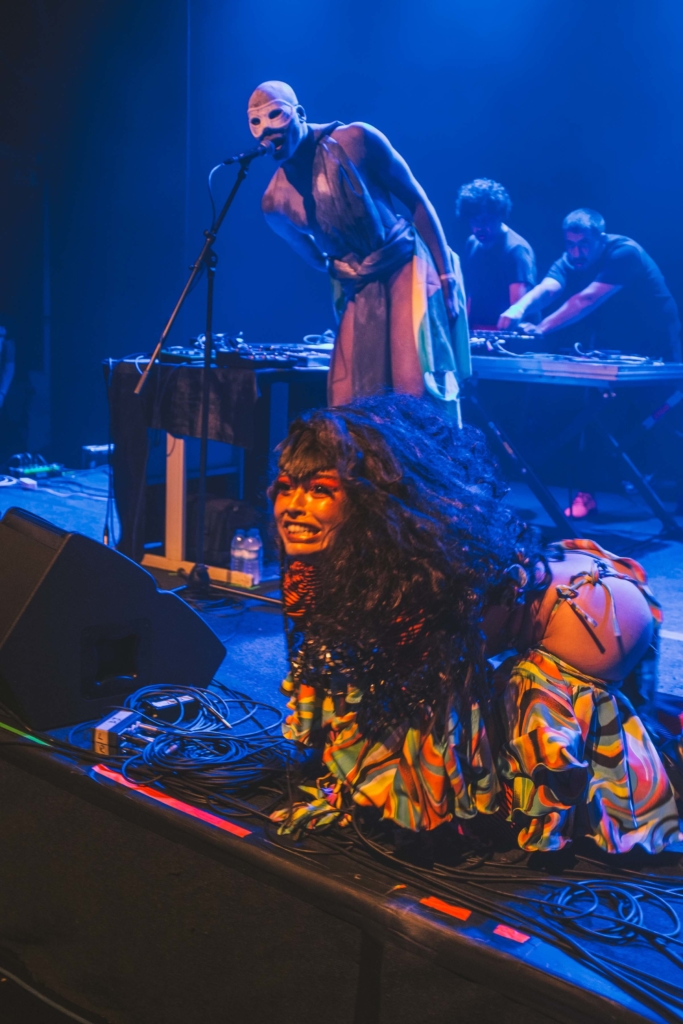
Teto Preto
A tongue-in-cheek search for identity – or playing with its various components – is what may be said about David Bruno’s concert taking place a day later in the picturesque Ribeira dos Caldeirões (again part of Tremor Na Estufa). Accompanied by a guitarist, he played songs from his debut album O Último Tango em Mafamude – sounding slightly nostalgic and a little 80s-inspired, and slightly kitschy with his Balearic stylistics, simple hip-hop beats and warm guitar sounds.
That night, upon returning to Ponta Delgada, I found it hard to focus in the hot and stifling atmosphere of the Ateneu Commercial – although Pop Dell’Arte, a Portuguese cross between The Fall and Joy Division (though, admittedly, not as grim as its inspirations) sounded really interesting. Had it not been for the oppressing temperature, I would have definitely stayed to listen to them longer. This I did in the foyer of Teatro Micaelense, where Jacco Gardner embarked on his exploration of spatial and psychedelic compositions in the vein of synthesizer-based, motoric Kosmische Musik (playing with an accompanying musician). His electronic suites sounded very pleasant in this interestingly lit space, but I wish he had offered a more absorbing narrative – contrary to the record, the concert sounded like a set of pieces instead of a coherent whole, and was regularly interrupted with moments of silence and applause.

Bulimundo
The most varied and exploratory programme took place on Friday in Ribeira Grande. Lula Pena’s concert in Museu Vivo di Franciscanismo served as an opportunity to ponder on the identity and interpretations of Portuguese fado and hear it being treated as a springboard to finding a modern musical language. However, the moving and intimate show based on just the guitar and voice was, literally, quite inaccessible. Only a few lucky ones could listen to the artist from up close – latecomers had to make do with music heard in the side aisle.
Complex narratives of multiculturalism cumulated in the Arquipélago Contemporary Arts Centre, located in an old brewery extended by a newly-built modernist part. I was most captivated by Chupame El Dedo, the Colombia-based duo of Pedro Ojeda and Eblis Alvares – their seemingly peculiar idea to translate death metal into cumbia sounds really brilliant live. Ojeda’s buzzing, jaw-dropping drumming met halfway with Alvarez’s samples and synthesizer swirls, and the two vocals – growling and slightly childlike – brilliantly counterpointed each other. Their spectacular, colourful music is based as much on pastiche as on unbridled energy. In the Black Box room, on the other hand, Cristóvão Ferreira and Tupperware created a rather unconvincing blend of the grand piano and electronica – in 2019, piano parts backed with a growing beat may only be described as unimaginative and dated.
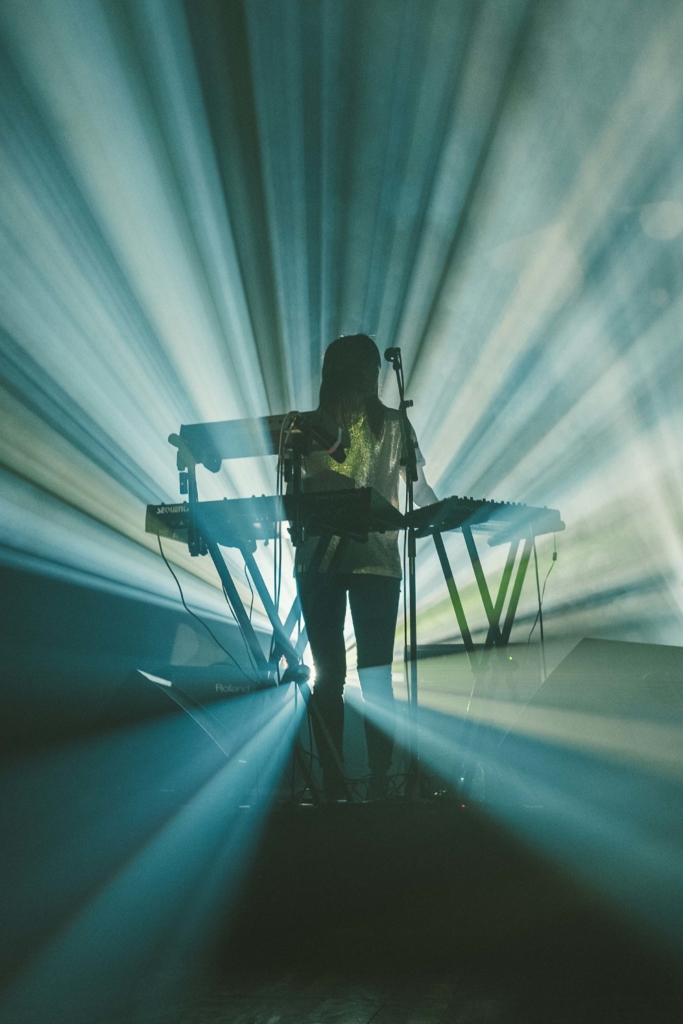
Moon Duo 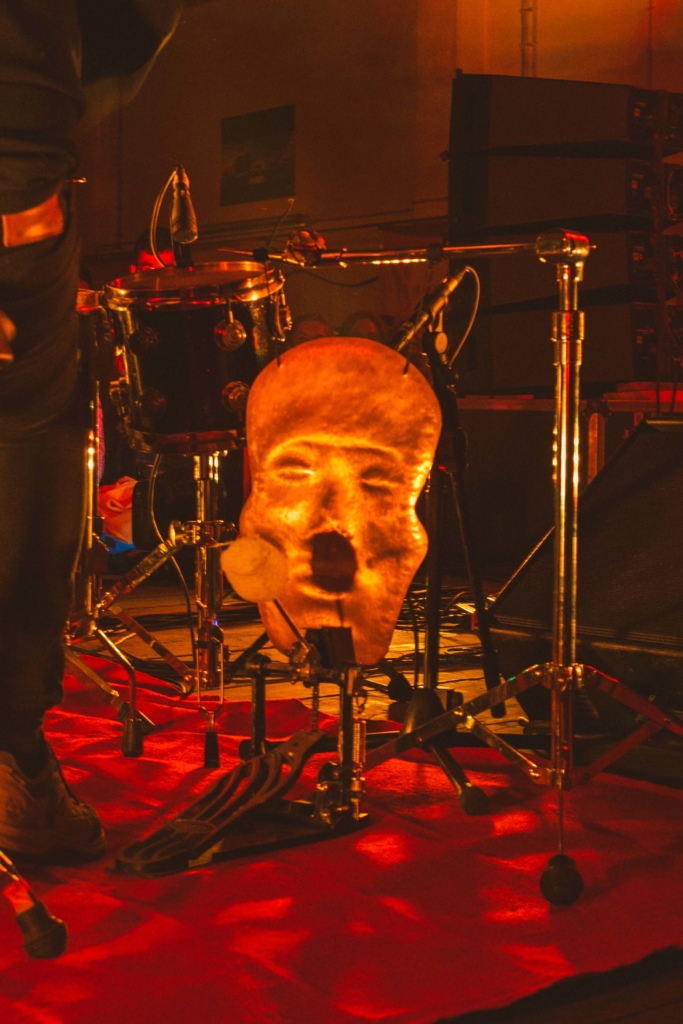
João Pais Filipe
The same venue was later used by Lafawndah to look for her musical identity. At the outset, her show with drummer Valentina Magaletti was very inventive, a true performance, but it gradually lost its edge and veered off in the general pop direction. Lafawndah seemed to have run out of ideas and contented herself with presenting, one by one, pieces from her latest album Ancestor Boy – with a lot of the music played in the form of samples and drumming basically reduced to ornamentation. She could definitely do with a bigger band and larger space. Like that of Teatro Ribeiragrandense, where an hour later Teto Preto played their show (or concert/performance, to be more precise). Musically, this five-piece offers a staggering blend of techno and rave, while the visual side, thanks to Angela Carneosso and dancer Loic Koutana, is informed by dance art and theatre. Semi-naked, in costumes that sometimes revealed all of the intimate parts that are usually hidden from view, they looked extravagant to say the least. Some could even call it controversial, but I personally am not sure whether this stage prop was really necessary. Teto Preto’s electronic, pulsating music would have sounded equally convincing on its own, and was a really good match with the venue.
Full festival gallery on FLICKR
Following the shearwater
Haley Heynderickx seemed slightly shy playing her charming and honest folk-blues in Igreja do Colégio the following day. In between the music, she took the time to talk about the origins of her songs, US politics and the different mentality of Americans and the Portuguese – with disarming sincerity, smiling almost all the time. Hailu Mergia, on the other hand, did not sound too convincing – and his gigs are normally nothing less than captivating. Not when you’re seated, though – the main auditorium of Teatro Micaelense was almost empty towards the end of the show, and the Ethiopian’s music just didn’t work in this setting, failing to generate any enthusiasm from his audience. I bet he would have sounded entirely different in the Coliseu Micaelense, a space conquered by Cape Verde’s Bulimundo, precursors of the funaná genre. Theirs was a brilliant and colourful gig, a fusion of rock, jazz, electronica and swinging melodies –warm, pulsating and played by almost a dozen musicians. Despite a hiatus of more than ten years, they’re in perfect shape. Bulimundo were followed by Moon Duo, who played possibly the loudest set of the festival, a spatial, psychedelic take at Krautrock and psychedelic rock. However, the most interesting gig that evening took place a few hundred metres away, in Garagem Antiga Varela, in the form of a genuine quest to find rhythm and pulse in music. Owing to adverse weather conditions, some of the artists could not make it to the island (I was particularly sorry to miss the Nyege Nyege team, with first DUKE and then Jay Mitta dropped from the line-up). This necessitated changes on the part of the organizers, and so just before 11 p.m., the stage was taken by João Pais Filipe, a truly unique drummer playing with 4.0 surround sound. His rhythmical pieces, at times verging on techno, grew denser with every minute. Despite not using the bass drum, he generated a mighty sound, tightly filling the space, from the low registers of a couple of floor toms to the occasional, banging tour de force on hi-hats (which he even carved himself!).
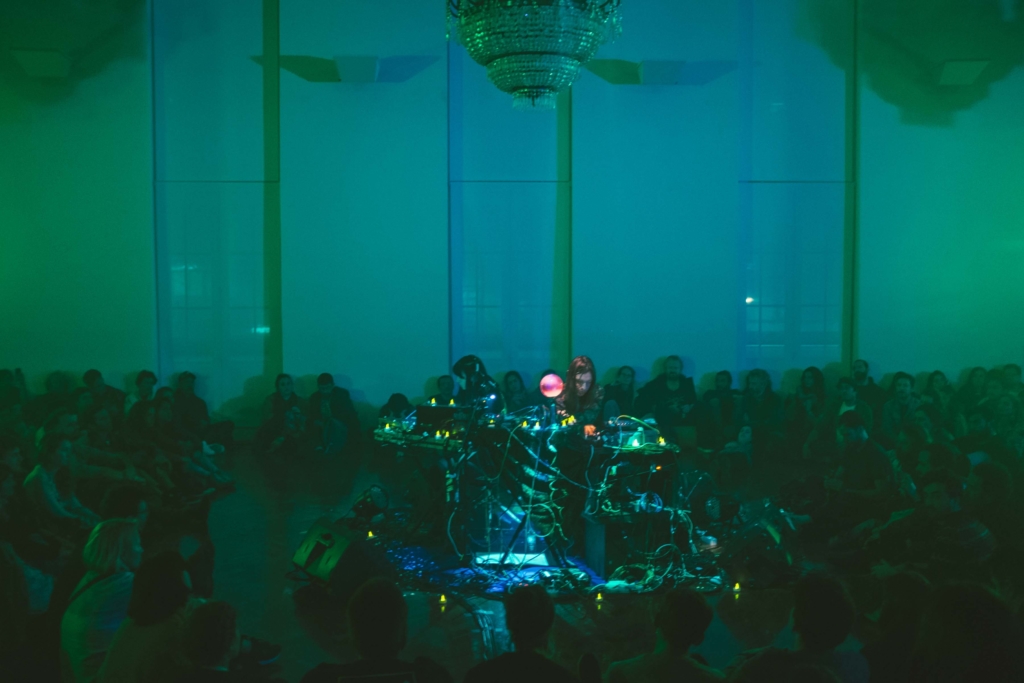
Jacco Gardner
The only problem was the reverb in the rooms – sounds kept reflecting from all sides, like the day before at Chupame El Dedo’s gig in Archipelago. Tremor’s organizers usually do a great job matching artists with venues, but such slip-ups are worth improving (like Lawafndah in too small a space of the art museum).
Lieven Martens, who came to the Azores as part of a residency programme, sounded amazing, though. The residencies are an important part of the festival: most commissioned music is really rooted in the location, directly referring to it. The Belgian field recorder presented his piece The Cow Herder, a sonata recorded as a tribute to the herdsmen of Corvo island (before that, he documented his visit to Pico island). In the foyer of Teatro Micaelense, he combined field recordings with subtle, sparse piano samples. The meditative concert sparked a dialogue with the peculiar nature of this place. At last! Martens’ brief performance was finalized in style too: as an encore, he played a short recording of sounds made by the cagarro, or Cory’s shearwater, a seabird native to the Azores.
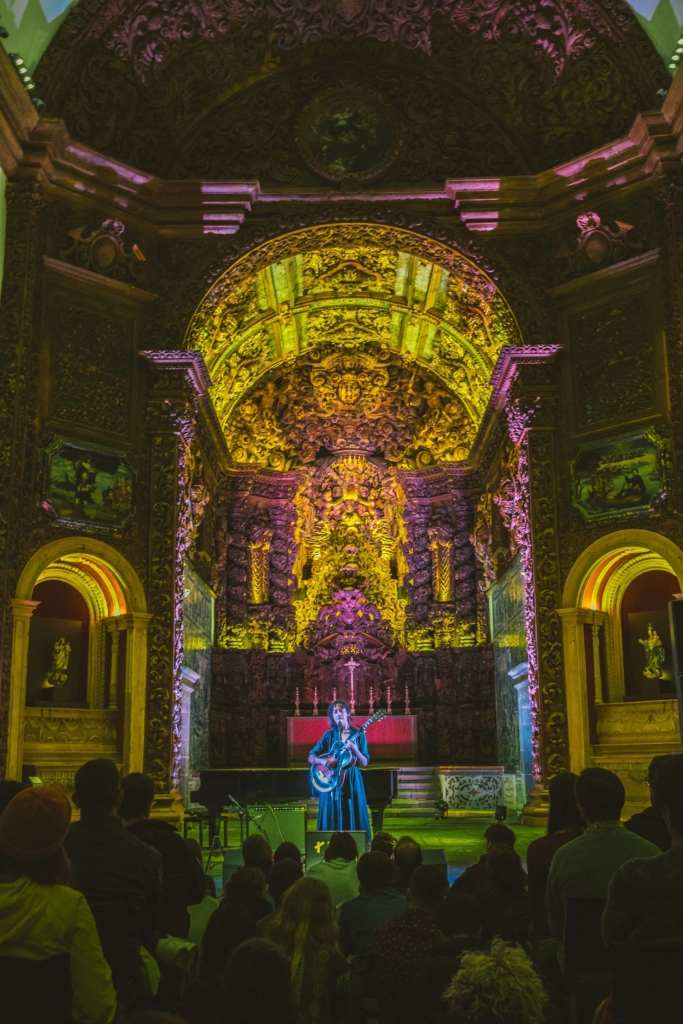
Haley Heynderickx 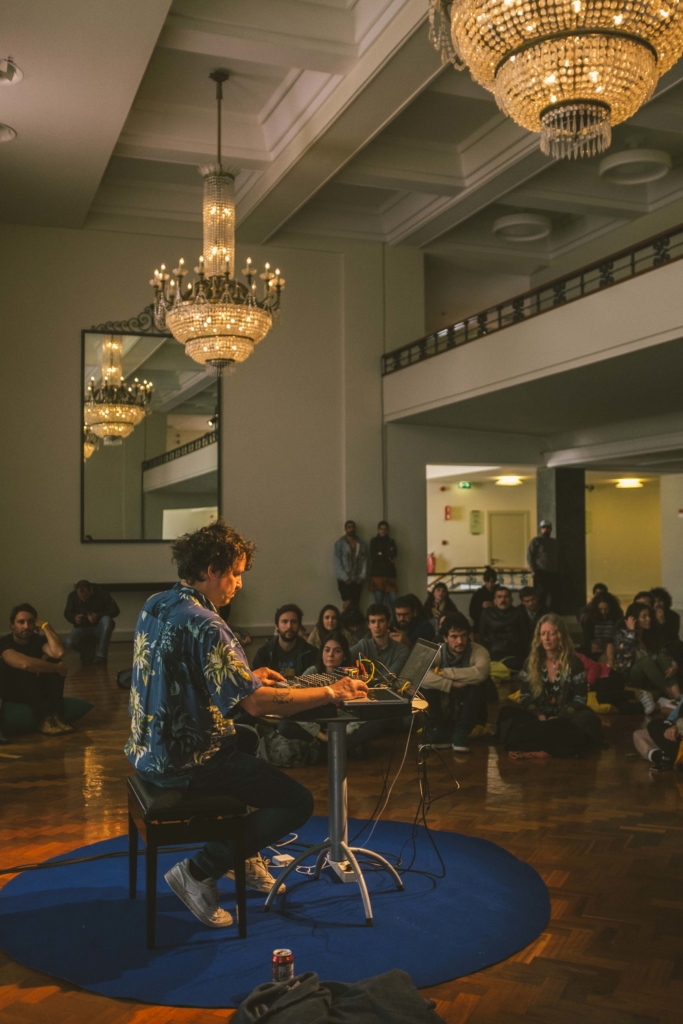
Lieven Martens
A tale of cultures
My last Tremor show was delivered by crazy Catalans from Za! who made buzzing, rhythmical, pulsating music with the use of drums, synthesizers and samples. The duo juggled genres and sounds with ease and verve. At one point, they were joined on stage by dancers and musicians from Despensa Os Companheiros Rabo Peixe. It was loud and cheerful. The day before, Za! played with this local traditional band as part of Tremor na Estufa – for me, this was the most important point of the festival, which is why I’m writing about it at the very end.
The musicians jointly marched through the streets of the seaside town Rabo da Peixe – right after two other bands: Despensa Amigos De São Sebastião and Despensa A.S. & Companheiros (each outfit comprising five musicians and ten dancers with castanets) – in a colourful, inviting musical fiesta. Both festival-goers and locals, who first stood on the porches of their houses or observed the procession from their windows, joined them to perform the traditional dance of despensa. Later on, everyone shuffled to Casa Do Espírito Santo Da Beneficência for a celebration of music and the Azores identity. In the culminating point, the whole room sang the cheerful “Penzihno da Vila”, a traditional folk song of the islands. Apart from being a truly moving moment, after so many concerts rooted in local contexts, it really brought home Tremor’s greatest strength and function: after all, festivals need not just be a venue for the presentation of global artists, but also those whose music sheds new light on tradition.
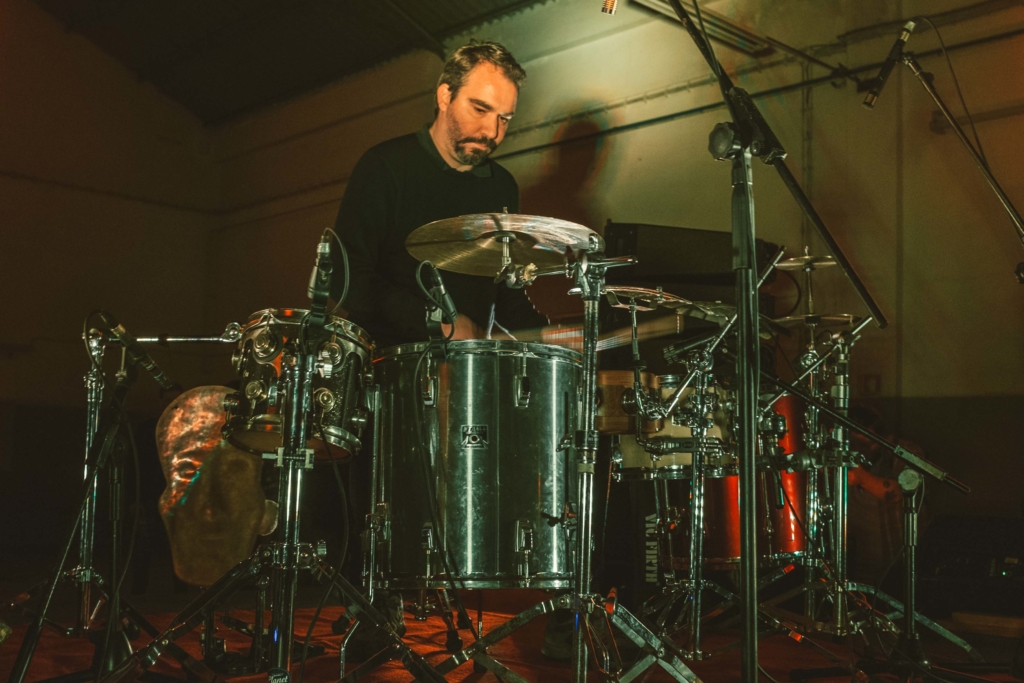
João Pais Filipe
To quote Krzysztof Czyżewski, throughout this April week, the festival was my ‘small centre of the universe’. On São Miguel, halfway between the US and Europe, that music did something more: it spoke about a place to whose traditions I know I will want to come back. A festival thus understood not only presents music, but transmits culture, also in a novel form. It offers something more than entertainment – and this ‘added value’ really speaks volumes, even for visitors from the other end of Europe.
Full festival gallery on FLICKR
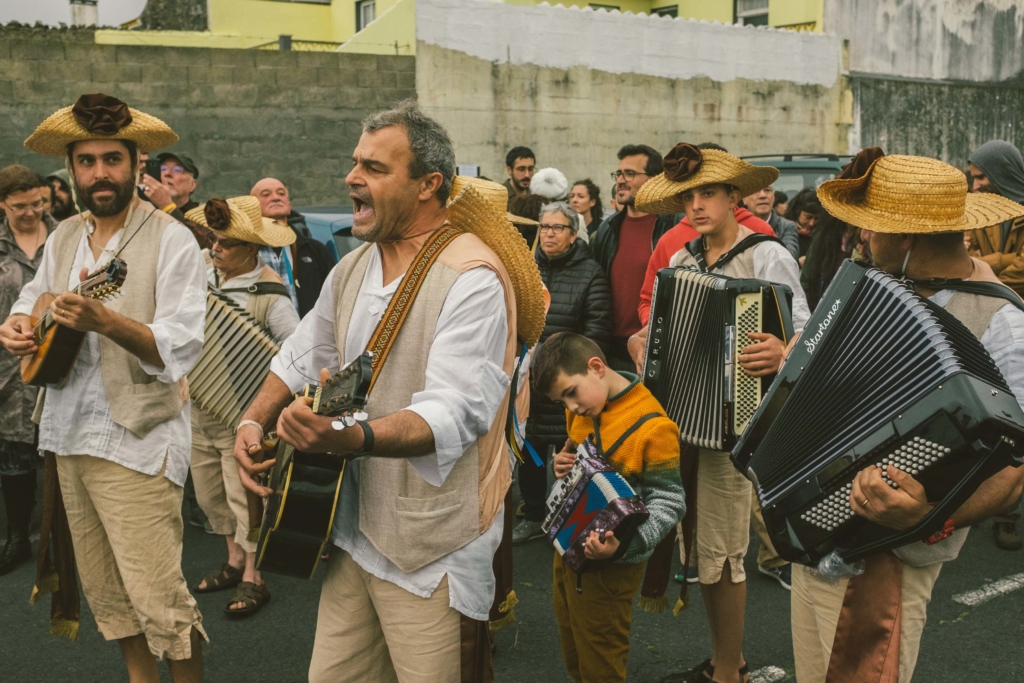
Despensa Os Companheiros De Rabo De Peixe 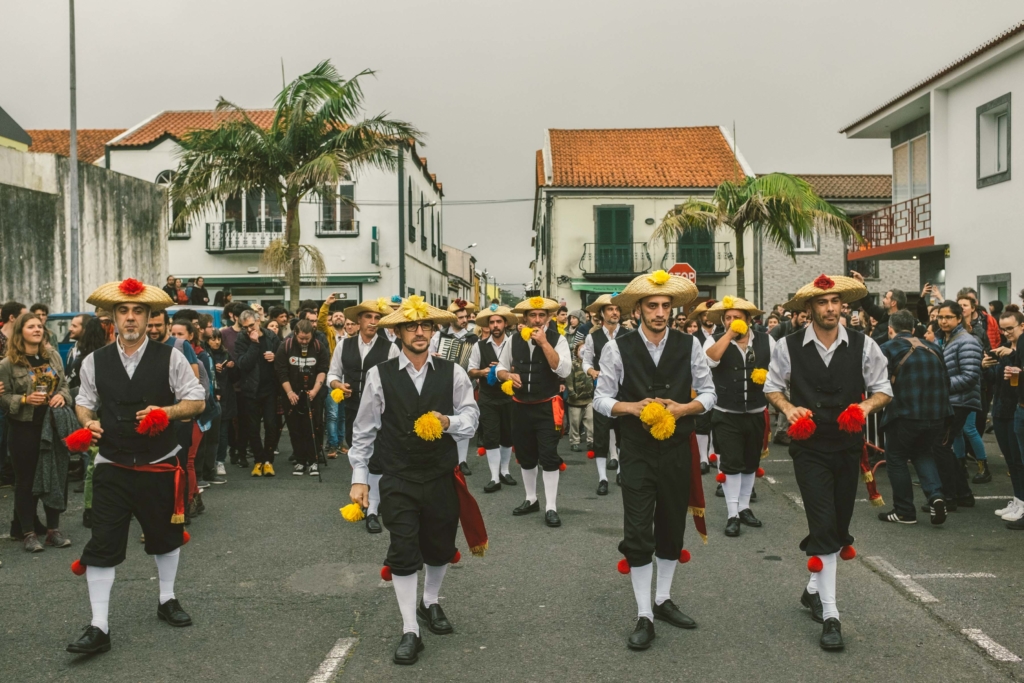
Despensa Amigos De São Sebastião 
Siscole 
Yin Yin
PS. Colin Stetson, who also played at the festival, demonstrated a very strong and original artistic personality after years of shaping his musical language. I didn’t manage to catch him in Ponta Delgada, but saw and heard his performance the day before in Lisbon at the Igreja St. George church.


